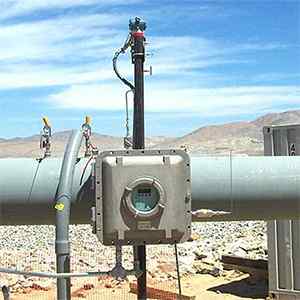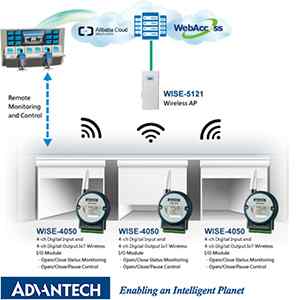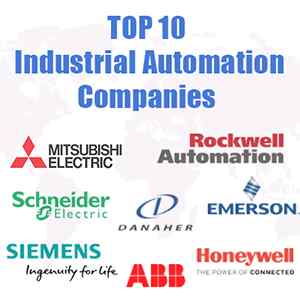How are Industrial Furnaces and Ovens Revolutionizing Manufacturing Processes?

Industrial furnaces and ovens stand as integral components in modern manufacturing, offering precise control over heating processes critical for various industries. From metalworking to ceramics, semiconductor fabrication to food processing, these heat processing units have redefined manufacturing by ensuring efficiency, quality, and reliability. This article explores the transformative impact of industrial furnaces and ovens, their key features, applications, benefits, and future trends, delving into their role as the backbone of contemporary production lines.
I. Understanding Industrial Furnaces & Ovens
Industrial furnaces and ovens are specialized equipment designed to heat materials to high temperatures, often exceeding 1000°C, for manufacturing purposes. They come in diverse configurations such as batch, continuous, and conveyorized systems, each tailored to specific manufacturing requirements. These units are equipped with advanced features and technologies that enhance efficiency, reduce energy consumption, and improve product quality.
II. Key Features and Technologies
Modern industrial furnaces and ovens incorporate several key features and technologies:
Temperature Control: Precise temperature control mechanisms ensure consistent heating profiles, critical for achieving desired material properties and ensuring uniformity across batches.
Heat Recovery Systems: Energy-efficient models utilize heat recovery systems to capture and reuse waste heat, reducing operational costs and environmental impact while maximizing resource utilization.
Automation and Integration: Integration with automation systems enables seamless operation, remote monitoring, and data-driven process optimization, enhancing productivity, and reliability while reducing human error.
Advanced Insulation: Utilization of advanced insulation materials such as ceramic fibers and refractory bricks improves thermal efficiency and reduces heat loss, contributing to energy savings and improved process performance.
Safety Systems: Robust safety systems including temperature alarms, gas leak detectors, and emergency shutdown mechanisms ensure a secure working environment, safeguarding both personnel and assets.
III. Applications across Industries
The versatility of industrial furnaces and ovens allows for diverse applications across industries:
Metals and Alloys: In metalworking, these units are used for annealing, tempering, brazing, and heat-treating operations, enhancing material strength, durability, and corrosion resistance, thus meeting stringent industry standards.
Glass and Ceramics: Furnaces play a crucial role in glassmaking and ceramics production, facilitating melting, shaping, and annealing processes to create high-quality products with consistent properties and aesthetics.
Semiconductor Manufacturing: In semiconductor fabrication, ovens are employed for wafer baking, curing photoresists, and annealing thin films, contributing to precise electronic component manufacturing and ensuring reliability in electronic devices.
Food Processing: Industrial ovens are utilized in the food industry for baking, drying, roasting, and sterilization processes, ensuring food safety, and quality, and extending shelf life while meeting regulatory requirements.
Automotive and Aerospace: Heat treatment furnaces are integral to the production of automotive components and aerospace materials, optimizing mechanical properties and performance, and meeting stringent industry standards for safety and reliability.
IV. Benefits and Advantages
The adoption of industrial furnaces and ovens offers several benefits:
Improved Product Quality: Precise temperature control and uniform heating lead to consistent product quality, reducing defects, rework, and warranty claims, thus enhancing customer satisfaction and brand reputation.
Enhanced Efficiency: Faster heating and cooling cycles, coupled with energy-efficient designs, result in higher production throughput, reduced cycle times, and lower operating costs, contributing to overall business profitability.
Customization and Flexibility: Modular designs and programmable settings allow for customized heat treatment profiles, accommodating diverse manufacturing needs and enabling rapid prototyping and product development.
Compliance and Standards: Compliance with industry standards and regulatory requirements, such as ISO certifications and safety protocols, ensures product integrity, market acceptance, and legal compliance, reducing risk and liability.
Competitive Advantage: Leveraging advanced heat processing technologies provides a competitive edge through faster time-to-market, innovation, and cost-effectiveness, enabling businesses to stay ahead in a dynamic market landscape.
V. Future Trends and Innovations
The future of industrial furnaces and ovens is marked by technological advancements and industry trends:
Industry 4.0 Integration: Greater integration with Industry 4.0 technologies such as IoT connectivity, data analytics, and predictive maintenance will optimize performance, reliability, and resource utilization, enabling proactive decision-making and minimizing downtime.
Energy Sustainability: Focus on energy-efficient designs, renewable energy sources, and green manufacturing practices will align with sustainability goals, reduce environmental impact, and enhance corporate social responsibility.
Materials Science Advances: Innovations in insulation materials, refractory coatings, and heat transfer technologies will enhance thermal efficiency, process control, and durability, contributing to improved product performance and longevity.
Automation and Robotics: Increased automation and robotics integration will streamline operations, improve safety, and enable lights-out manufacturing in some applications, enhancing productivity, and scalability.
Digital Twins and Simulation: Adoption of digital twins, simulation software, and virtual testing will facilitate optimization of furnace and oven designs, accelerate product development cycles, and reduce time-to-market, fostering innovation and competitiveness.
In conclusion, industrial furnaces and ovens play a vital role in modern manufacturing, offering efficiency, quality, and reliability across diverse industries. With ongoing technological advancements and a focus on sustainability, automation, and innovation, these heat processing units will continue to revolutionize manufacturing processes, driving growth, competitiveness, and sustainability in the global industrial landscape.







